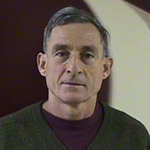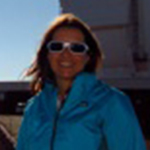Seminars are held at 4:00 PM on Tuesdays in Room F160
on the first floor of the Technological Institute (2145 Sheridan Road) unless otherwise noted
Fall Quarter 2010
| Date | Visitor / Seminar | Host | |
| Sept. 21 |  |
Moshe Elitzur The variety of observations of Active Galactic Nuclei (AGN) show that the nuclear activity is powered by a central massive black hole that drives radio emitting jets and ionizes surrounding line-emitting clouds. This central engine is surrounded by an obscuring torus, comprised of optically thick dusty clouds in a rotating configuration. The torus dynamical origin, and especially its vertical support, present a serious challenge.
| Farhad Zadeh |
| Sept. 28 |
 |
Chris Howk The cosmic abundance of lithium continues to represent a conundrum, as predictions from standard theories of Big Bang nucleosynthesis are inconsistent with measurements in the atmospheres of the lowest-metallicity stars. This discrepancy may be caused by astrophysical effects, such as the destruction of Li in the stars over their lifetimes, although no fully satisfactory astrophysical explanation has been proposed. Alternatively, it may also be explained by new physics in the early universe, e.g., by the early decay of particle dark matter. We are following an alternate approach to studying the cosmic Li abundance: the use of interstellar gas-phase Li in low-metallicity galaxies as a constraint on the primordial abundance and the cosmic evolution of Li. I will present measurement of gas-phase Li in the Small Magellanic Cloud, the first such measurement beyond the Milky Way. I will discuss the implications of our measurements and the prospects for future advances in this area. |
Dave Meyer |
Oct. 5 |
 |
Peter Goldreich Debris from asteroids and comets continually bombards the Earth. Big impacts launch ejecta on trajectories that carry them thousands of kilometers from the impact site. These are recorded in discrete layers of submillimeter size spherules in sea floor sediments. Larger, aerodynamically shaped, objects are found on land. I will describe the physical processes that occur in energetic impacts with emphasis on the evolution of the fireball and determination of the range and size of the ejecta. |
Yoram Lithwick |
| Oct. 12 |
 |
Marua Bradac In this talk I will focus on exploring galaxy clusters, on one hand in their role as dark matter laboratories, and on the other using them as cosmic telescopes to efficiently probe the high redshift (z>7) Universe. These observations will provide an empirical benchmark for the next generation of theoretical models of galaxy formation in given cosmological framework (e.g. LambdaCDM). The cluster of galaxies 1E0657-56 (aka the Bullet Cluster) has been the subject of intense research in the last few years. This system is remarkably well-suited to addressing outstanding issues in both cosmology and fundamental physics. In this talk I will present our measurements on the limits that can be placed on the intrinsic properties of dark matter particles from the Bullet cluster and another Bullet-like cluster MACSJ002 5-1222. Further I will describe how we can tackle the questions of dark matter properties using a large sample of galaxies and galaxy clusters that act as gravitational lenses. Furthermore I will present the new HST/WFC3 deep data on the Bullet Cluster and how using this ideally placed (in terms of redshift) and accurately focused cosmic telescope we are able to have one of the first peeks at z>7 galaxies. | Mel Ulmer |
| Oct. 18 *Fisk Hall 217 |
 |
Kip Thorne There is a Warped Side to our Universe: objects and phenomena that are made from warped space and warped time. Three examples are black holes, the big-bang in which our Universe was born, and ripples in the fabric of space-time called gravitational waves. Thorne will describe the Warped Side of our Universe and the quest to probe it theoretically using computer simulations, and observationally using gravitational waves. |
CIERA |
| Oct. 26 |  |
Luis Ho A significant fraction of nearby galaxies show evidence of weak nuclear activity unrelated to normal stellar processes. Recent high-resolution, multiwavelength observations indicate that the bulk of this activity derives from black hole accretion with a wide range of accretion rates. The low accretion rates that typify most low-luminosity active galactic nuclei induce significant modifications to their central engine. The broad-line region and obscuring torus disappear in some of the faintest sources, and the optically thick accretion disk transforms into a three-component structure consisting of an inner radiatively inefficient accretion flow, a truncated outer thin disk, and a jet or outflow. The local census of nuclear activity supports the notion that most, perhaps all, bulges host a central supermassive black hole, although the existence of active nuclei in at least some late-type galaxies suggests that a classical bulge is not a prerequisite to seed a nuclear black hole. |
Farhad Zadeh |
| Nov. 2 |
 |
Steve Kawaler The development of our capacity for very high precision (micromagnitude) photometry over extended stretches of time (months to years) of a large number of stars has been fueled by the hunt for Earth-like planet transits of solar-type stars. This space-based observational capability is also ideally suited to the seismic sounding of stellar interiors: subtle variations in the brightness of stars can reveal global stellar oscillations. Thus missions such as NASA's Kepler are providing asteroseismologists with data on thousands of stars that are orders-of-magnitude more sensitive than any efforts from the ground. In this talk, I will show how we are using the tools of asteroseismology to probe the depths of a variety of types of stars to make use of data from these missions, and how these investigations complement the planet-finding projects. |
Fred Rasio |
| Nov. 9 |  |
Elena Pierpaoli Galaxy clusters have been extensively studied in the past decades with the double aim of constraining cosmology and understand structure formation and evolution. Clusters are observed in the optical band, where galaxies are seen, and in the X--ray and radio/infrared bands, where the intra-cluster gas is observed. New surveys in different bands now allow to bridge between different bands for a statistically significant sample of clusters. Moreover, new high-resolution images of clusters are becoming available in the radio band. I will review some of the recent progress made in detecting clusters in the Sloan Digital Sky Survey (SDSS) and the characterization of their brightest cluster galaxies (BCGs). I will discuss the interplay (and current puzzles) for X--ray and radio cluster observations. I will also discuss new ways of extracting information on bulk flows with existent and upcoming observations of galaxy clusters. |
Mel Ulmer |
| Nov. 16 |  |
Paul Martini The evolution of AGN in clusters of galaxies traces the growth of some of the first and most massive black holes in the Universe. Observations have found that the fraction of luminous AGN in clusters is consistently about an order of magnitude below the field fraction from z=1 to the present. These results constrain the majority of cluster black hole growth to earlier times than field galaxies. We have now begun to measure star formation rates and stellar masses for galaxies in some of these same clusters. Intriguingly, the rate of galaxy growth, as traced by the fraction of galaxies with massive star formation, appears to have evolved in a similar manner to the AGN fraction. That is, the fraction of massively star forming galaxies in clusters is also suppressed by approximately an order of magnitude from z=1 to the present. This suggests that there is also black hole and galaxy co-evolution in clusters, even though both star formation and black hole growth are approximately an order of magnitude less common. |
Daryl Haggard |
| Nov. 23 |  |
Emily Rauscher Hot Jupiters are unlike any planets in our Solar System, but one of the most commonly discovered types of exoplanet. With orbital periods of a few days and expected to be tidally locked into synchronous rotation, these planets experience intense, asymmetric heating from the stellar irradiation, which may drive very fast winds. This unique state of radiative forcing, as well as their slow rotation rates, place hot Jupiters within a new regime of atmospheric circulation. Several modeling approaches are being developed for these exotic atmospheres, yet none are able to fully match current observations, which indicate complex flows and a diversity of behavior between systems. Given this context, I will present my work on three dimensional models of hot Jupiter atmospheric dynamics. I will discuss the challenges of adapting models to this regime, the complications that have to be accounted for, and the understanding we have gained from this pursuit. |
Nick Cowan |
| Nov. 30 |  |
Robyn Sanderson Recently, large-scale sky surveys and deep follow-up images have been used to discover a wealth of tidal debris around our Galaxy and others nearby. This debris can give clues to the shapes and masses of the dark matter haloes surrounding these galaxies, as well as those of the dwarf galaxies that were tidally disrupted to form the debris. The class of tidal features known variously as ``shells'' or ``umbrellas" comprises debris that has arisen from minor mergers with low impact parameters; the nearly radial orbits of the debris give rise to a unique shape and a universal radial density profile for each shell. The profile takes this form because the dynamical characteristics of the debris can be described by a modified version of the mathematical theory of caustics. Based on this universality, I identify a new method for constraining multiple parameters of a minor merger given only the two-dimensional image of the debris, and discuss how the addition of line-of-sight velocities or observations of multiple shells can improve or decouple those constraints. |
Will Farr |
| Dec. 7 |  |
Daniel Fabrycky In the last decade, measurements during transits revolutionized our knowledge of the physical properties of extrasolar planets. Now, transiting planets are sparking a new revolution about the dynamics of exoplanetary systems. I will showcase two active areas of research: (1) spin-orbit alignment, (2) transit timing variations. (1) The transit of a planet imprints a characteristic distortion on rotation-broadened spectral lines, whose time series reveals the direction of the stellar spin relative to the orbit of the planet. These measurements are creating a theoretical crisis related to orbital migration, tidal dissipation, and the origin of hot Jupiters. (2) The exquisite timing measurements available through photometric transits opens the possibility to observe planetary orbital evolution in real time. A pair of planets (Kepler 9 b/c) have been detected interacting through the 2:1 orbital resonance, which allows us to probe the detailed dynamics of a particular exoplanetary system. |
Smadar Naoz |
| Dec. 14 |  |
Martin Elvis Quasar nuclei are the quintessential point sources. The region where the broad emission lines arise is no larger than 100 microarcseconds in diameter, for example. Luckily, dark absorbing 'clouds' often eclipse the tiny X-ray source on observable timescales. The results suggest a coherent picture of the inner structure of quasars. |
Vicky Kalogera |
Past Astrophysics Seminars